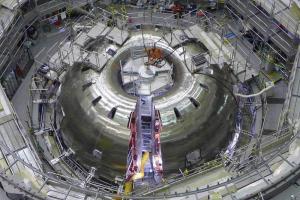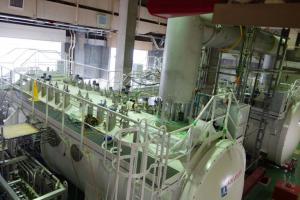Major assembly progress on JT-60SA fusion device
Installation of the cryogenic system has also been completed. JT-60SA's cryogenic system, with an equivalent refrigeration capacity of 9 kW at 4.5 K (-269 degrees C), will use helium to cool the superconducting magnets, thermal shields, and cryopumps. Part of the European in-kind contributions to the JT-60SA project, the cryogenic system was a voluntary contribution from France. The European agency collaborated with CEA (the French Alternative Energies and Atomic Energy Commission) to develop the preliminary design and specifications; in November 2013 CEA contracted the detailed design, manufacturing, installation and commissioning of this system to Air Liquide Advanced Technology in Sassenage, France.
Read the full report on the Fusion for Energy website.



